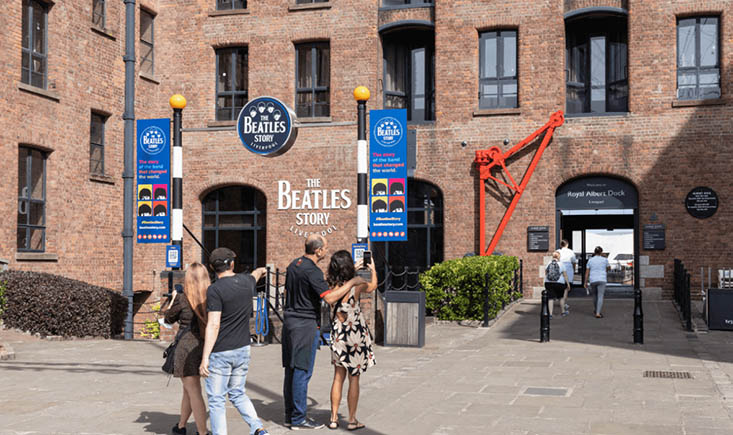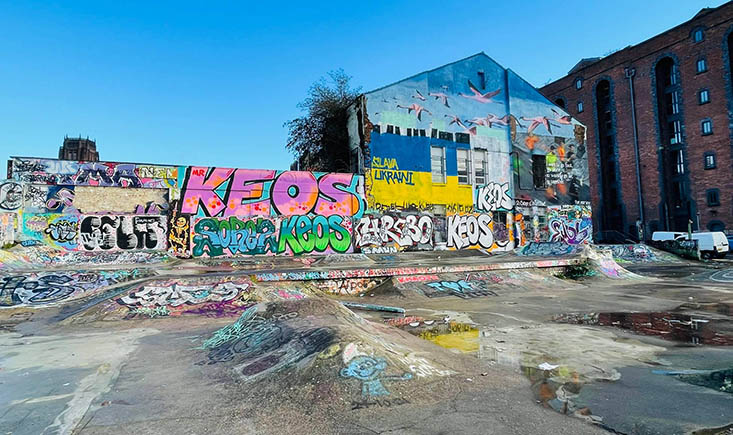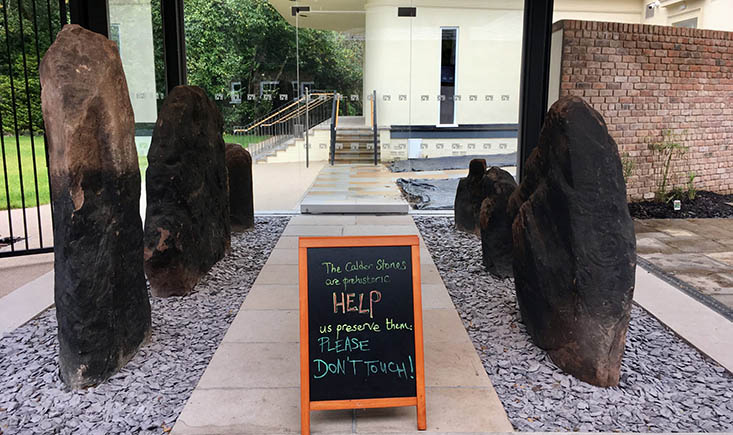
6 Must-See Attractions in Liverpool
DestinationsLiverpool is a city steeped in rich history, vibrant culture, and a deep connection to music and the arts. While its iconic landmarks like The Beatles Story and the Royal Albert Dock are world-renowned, there are hidden gems scattered across the city that are equally enchanting yet often overlooked. On my recent trip to Liverpool, I made it my mission to uncover some of these lesser-known spots, and each one added a unique layer to my experience.
1. The Williamson Tunnels: A Subterranean Secret
Hidden beneath the city streets, the Williamson Tunnels are one of Liverpool’s most intriguing mysteries. Built by eccentric philanthropist Joseph Williamson in the early 19th century, the tunnels remain an enigma as no one knows exactly why they were constructed. Some say they were intended to give employment to the poor, while others speculate they were part of an elaborate underground kingdom.
My experience:
Visiting the tunnels was like stepping into another world. As I descended into the dimly lit, labyrinthine passageways, I could feel the temperature drop and hear the echo of footsteps reverberating against the stone walls. The guided tour was fascinating, with our guide offering insights into Williamson’s peculiar personality and theories about the tunnels’ purpose. It felt like exploring a forgotten part of Liverpool’s history. If you enjoy hidden histories and quirky tales, this place is a must-see.
Getting there:
Located in the Edge Hill district, the tunnels are easily accessible by bus or a short taxi ride from the city center. Tickets can be booked online in advance for around £8.
2. Sefton Park Palm House: A Victorian Glass Masterpiece
Sefton Park is one of Liverpool’s largest green spaces, but hidden within it is a gem that makes it truly special: the Sefton Park Palm House. This stunning Victorian-era glasshouse is home to a diverse collection of exotic plants and flowers. The architecture alone is breathtaking, with its towering glass dome and intricate ironwork, but the peaceful interior feels like stepping into a tropical oasis.

My experience:
I stumbled upon Sefton Park Palm House during a leisurely afternoon walk. I had no idea such a beautiful structure existed within the park, and it felt like finding a secret garden. Inside, the air was thick with the scent of tropical plants, and the warm, humid environment was a stark contrast to the crisp air outside. I spent over an hour wandering through the different plant species and taking photos of the impressive palms and ferns. The Palm House also hosts regular events, including live music performances, which would make for a magical evening setting.
Getting there:
Sefton Park is about 10 minutes by taxi from the city center, or you can catch a bus from Lime Street Station. The Palm House is free to enter, but donations are encouraged to help with its maintenance.
3. Liverpool Cathedral: A Towering Beauty
Though Liverpool Cathedral is more widely known, it often doesn’t receive the attention it deserves compared to other European cathedrals. As the largest cathedral in the UK and the fifth largest in the world, it is an architectural marvel. But what makes it a hidden gem in my eyes is the view from the top of the tower, which many visitors overlook.
My experience:
The grandeur of the cathedral’s interior is awe-inspiring with its massive Gothic arches and stunning stained glass windows. However, the real magic happened when I ascended the tower. After a rather strenuous climb up the spiral staircase, I was rewarded with a panoramic view of the entire city, the River Mersey, and beyond. The wind whipped around me as I stood there, completely captivated by the beauty of Liverpool from above. The tower visit costs a small fee (£6), but it is absolutely worth it for the breathtaking vistas.
Getting there:
The cathedral is within walking distance from the city center, or you can take a short bus ride. Entry to the main cathedral is free, but donations are encouraged. The tower tour requires a separate ticket.
4. The Baltic Triangle: Liverpool’s Creative Hub
The Baltic Triangle is a former industrial area that has been transformed into one of the coolest and most vibrant neighborhoods in Liverpool. It’s home to independent galleries, quirky cafes, street art, and some of the best nightlife spots in the city. Unlike the more tourist-heavy Albert Dock, the Baltic Triangle has an edgier, more local vibe.

My experience:
I spent an entire afternoon exploring the streets of the Baltic Triangle, admiring the colorful murals and popping into artisan shops and cafes. One highlight was the Red Brick Market, a treasure trove of vintage clothes, handmade crafts, and unique artwork. As evening fell, the area came alive with the sound of live music spilling out from bars and venues like the Baltic Social and Constellations. If you’re into street art, music, and local culture, this neighborhood is not to be missed.
Getting there:
The Baltic Triangle is a short walk from Liverpool’s city center, or you can take a quick bus or taxi ride. It’s best to visit in the late afternoon and stay into the evening to experience the full atmosphere.
5. Speke Hall: A Tudor Mansion by the River
Situated on the outskirts of Liverpool, Speke Hall is a beautifully preserved Tudor mansion that offers a glimpse into the city’s rural past. Surrounded by woodland and with stunning views of the River Mersey, Speke Hall is a peaceful retreat from the bustle of the city.
My experience:
I visited Speke Hall on a crisp autumn morning, and the sight of the half-timbered house against the backdrop of golden leaves was magical. Inside, the house is filled with period furnishings and fascinating historical details about the families who lived there. One of the highlights for me was the intricately designed “priest hole,” a secret hiding place used during times of religious persecution. After touring the house, I wandered through the gardens and took a relaxing walk along the riverbank. It’s the perfect spot for history lovers and nature enthusiasts alike.
Getting there:
Speke Hall is about 30 minutes by car from Liverpool’s city center, or you can take a bus. It’s also close to Liverpool John Lennon Airport, making it a convenient stop if you’re flying in or out. Admission is around £14 for adults.
6. Calderstones Park: A Historical Green Space
While Sefton Park often steals the spotlight, Calderstones Park is another beautiful green space with its own set of unique attractions. The park is home to the Calder Stones, ancient megaliths that are believed to be older than Stonehenge. There’s also a charming old mansion house, a lovely lake, and plenty of quiet spots to relax and enjoy nature.

My experience:
Calderstones Park felt like a peaceful escape from the city. I spent some time exploring the walled garden, which is filled with vibrant flowers and well-manicured lawns. The park’s most fascinating feature, however, is the collection of Calder Stones. These ancient stones, covered in carvings and symbols, made me feel like I was standing in the presence of something deeply historic. It’s not as crowded as other parks, so I was able to enjoy the serenity and history in peace.
Getting there:
Calderstones Park is located about 15 minutes by car from the city center, or you can take a bus. The park is free to enter, and it’s a great spot for a picnic or a leisurely afternoon walk.
Liverpool is a city full of surprises. While its major landmarks are certainly worth visiting, it’s the hidden gems like these that truly capture the essence of the city. From underground tunnels to serene parks, each of these attractions offers a unique and authentic perspective of Liverpool.
You may also like
Recent Posts
- Antiquing Through Time in Dundee: A Wanderer’s Chronicle
- Seaside Delights: Discovering Dundee’s Finest Seafood Restaurants
- A Taste of True Scotland: Discovering Authentic Flavors in Dundee
- Hiking and Nature: The Best Outdoor Activities in Dundee
- A Museum Trail Through Dundee: From V&A to The McManus

Leave a Reply